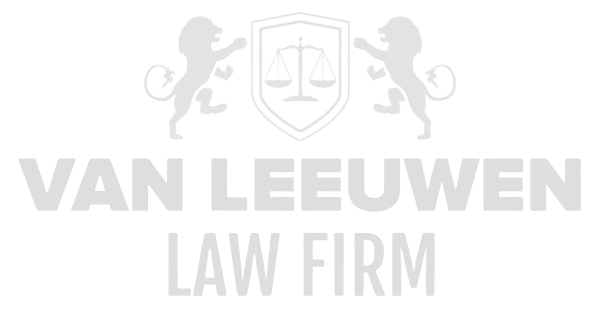Risk management forms an integral part of the Strategy, Risk & Compliance (SRC) service and plays a key role in effectively managing fraud risks within organizations. In today’s business landscape, enterprises face a wide range of threats originating from both internal and external sources. Fraud risks, in particular, are highly complex and dynamic, as fraudsters continuously adapt to changing controls, technologies, and regulations. Risk management in the context of fraud prevention and detection involves more than just reactive measures: it encompasses a proactive, systematic, and ongoing cycle of risk assessment, mitigation, and monitoring. This approach focuses on analyzing potential vulnerabilities within processes, systems, and human behaviors, with the goal of preventing undesirable incidents that could lead to financial losses, reputational damage, operational disruption, and legal liability. The need for a robust and comprehensive risk management framework significantly increases when organizations—or their executives and supervisors—are confronted with allegations of financial mismanagement, fraud, bribery, money laundering, corruption, or violations of international sanctions. Such situations pose a direct threat to the continuity, credibility, and societal legitimacy of an organization.
Financial Mismanagement
Financial mismanagement is one of the most impactful risk categories within fraud risk management. It refers to actions or omissions that lead to inefficient, ineffective, or inappropriate use of resources, often accompanied by a lack of oversight or inadequate internal control mechanisms. Financial mismanagement can manifest in careless budgeting, unauthorized expenditures, misuse of funds, or the systematic disregard of reporting obligations. Within the risk management process, this type of risk requires a thorough assessment of governance structures, financial reporting systems, and budgeting disciplines. It is essential to establish policy safeguards that ensure transparency, traceability, and accountability. Only by setting up robust internal controls, independent audit functions, and clear escalation protocols can organizations protect themselves against the consequences of financial mismanagement, both in terms of direct financial damage and reputational loss or loss of trust with regulators and investors.
Fraud
Fraud poses a serious threat to the integrity of organizations and requires a specialized approach within broader risk management. It involves intentional acts aimed at deception, deceit, or unlawful enrichment, usually at the expense of the organization itself or its stakeholders. Within fraud risk management, various types of fraud are recognized, including invoice fraud, payroll fraud, accounting fraud, conflicts of interest, and cyber fraud. An effective risk management process begins with a holistic fraud risk analysis, in which potential vulnerabilities in processes, systems, and culture are identified. Subsequently, control mechanisms such as segregation of duties, access restrictions, and advanced detection tools need to be implemented. Equally important is the creation of an ethical organizational climate that encourages integrity and discourages misconduct. Fraud that is not recognized in a timely manner can lead to prolonged legal proceedings, loss of market share, penalties from regulators, and irreparable damage to the brand or institution’s reputation.
Bribery
Bribery is a risk category that not only has legal consequences but also fundamentally undermines the credibility of an organization. It involves offering, promising, giving, or receiving something of value with the intention of unlawfully influencing a business or governmental decision. In the context of risk management, identifying bribery risks is often complex because these actions typically occur outside formal decision-making structures, through intermediaries, or in offshore jurisdictions. Effective risk management in this area requires, among other things, the development of anti-bribery policies, the implementation of training and awareness programs, and mandatory due diligence on all third parties. Internal procedures must explicitly prohibit employees or representatives from seeking benefits through unauthorized influence, while systems for reporting misconduct—such as whistleblower schemes—must be accessible and reliable. Bribery incidents can lead to significant fines, criminal prosecution of executives, and exclusion from procurement procedures, with far-reaching consequences for the strategic position of the organization.
Money Laundering
Money laundering is a serious violation of both legal and ethical standards and is closely linked to other forms of crime, such as drug trafficking, human trafficking, or tax evasion. It involves the process of converting illegally obtained money into seemingly legitimate income. Organizations can become involved in money laundering—either knowingly or unknowingly—by doing business with questionable clients, facilitating unusual transactions, or ignoring suspicious signals that should be reported. Within the risk management process, performing thorough Know Your Customer (KYC) procedures is crucial. This includes identifying ultimate beneficiaries, screening clients against sanction lists, and monitoring financial transactions for irregular patterns. Automated detection systems, transaction monitoring software, and clear reporting channels to the Financial Intelligence Unit (FIU) are part of a robust anti-money laundering policy. The consequences of involvement in money laundering extend beyond financial sanctions; they can also lead to criminal prosecution and public condemnation, posing a direct threat to the survival of the organization.
Corruption
Corruption, in all its forms, undermines the rule of law and disrupts fair competition. Within the framework of fraud risk management, corruption is defined as the abuse of a position of trust for personal gain. This can manifest in favoritism, conflicts of interest, abuse of power, or the unlawful awarding of contracts. A disciplined risk management approach requires exposing power concentrations, opaque decision-making, and inadequate oversight within the organization. Preventive measures include the implementation of codes of conduct, integrity statements, structured procurement procedures, and periodic audits of high-risk functions. Transparency and reporting are essential to make corruption risks visible and manageable. When corruption is uncovered, it can not only lead to reputational and financial damage but also to prolonged sanctions from public institutions and regulators. In the worst case, it results in management crises or the revocation of licenses.
Violations of International Sanctions
International sanctions are imposed by states or multilateral organizations such as the United Nations or the European Union to exert economic or political pressure. Violations of these sanctions by companies, whether directly or through intermediaries, are severely penalized and can result in significant legal, financial, and political repercussions. Therefore, within the risk management process, it is essential to implement a sanctions compliance policy that applies not only internally but also to all external relationships. This includes conducting sanctions screening on customers, suppliers, shareholders, and other stakeholders, as well as regularly updating sanction lists within compliance systems. It is also necessary to ensure proper registration and documentation of international payments and deliveries. Failing to comply with sanction regulations can result in the freezing of assets, exclusion from international markets, and lengthy legal proceedings. By investing early in a well-thought-out risk management structure related to sanction compliance, not only is legal liability minimized, but the trust of regulators and markets is also strengthened.










